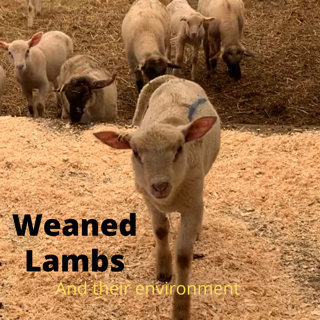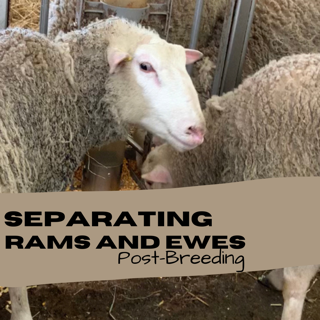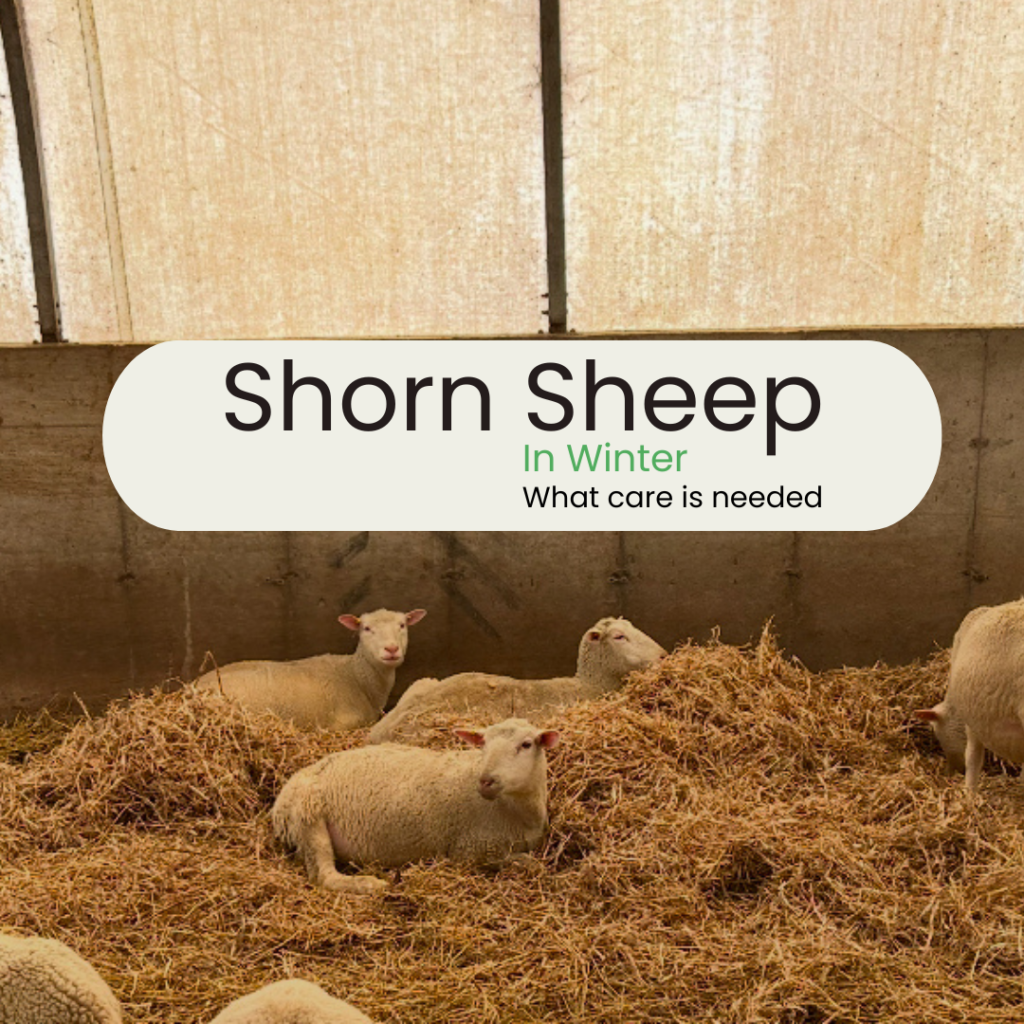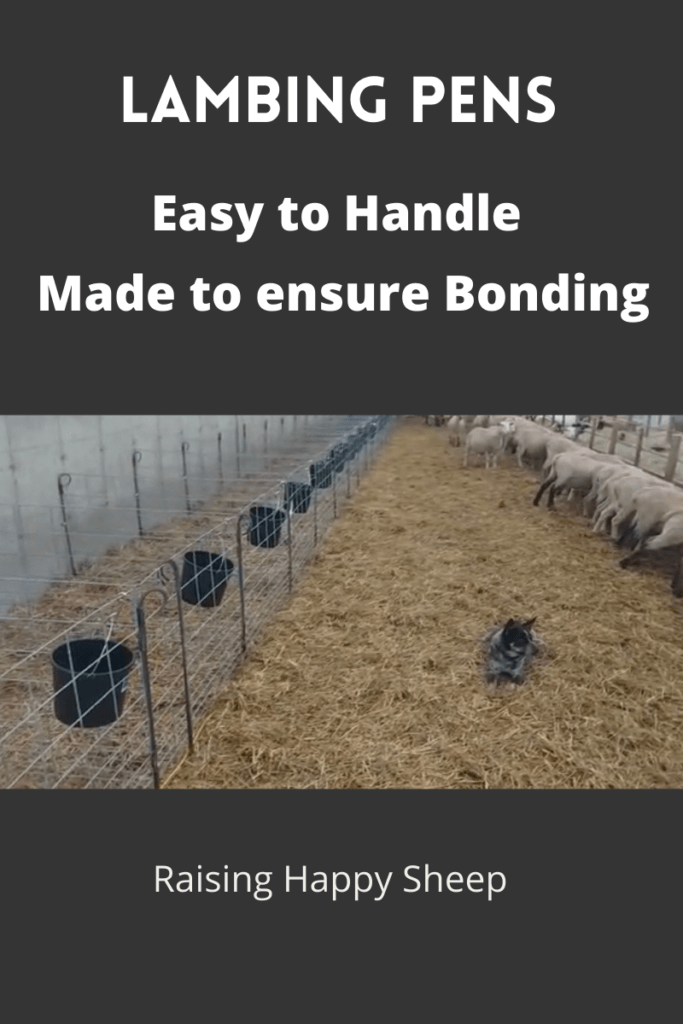What Do I Need To Know About Weaning Lambs?
Last Spring, 2021, we had 300 living lambs that were born in two coveralls. Our aim is to raise healthy lambs from birth to about 100 pounds at which time they are sold at the livestock market. Therefore, it’s imperative that we know when to wean lambs. The following points help guide us.
When Do Ewes Cease Lactation?
For most lamb operations and those commercial flocks that are raising lambs in the barn, the normal weaning time is around 60 days after those lambs are born. This is the time period when milk production in the ewe is becoming lower and the lambs are in need of higher quality nutrition than the milk can provide. It is more efficient to feed the lambs than it is to feed the ewes to maintain low levels of milk production.
Source: https://u.osu.edu/sheep/2008/06/20/weaning-time-for-the-ewe-flock/
Weaning Environment
Generally, weaning is more stressful for lambs than ewes. At weaning, the lambs are challenged not only by being separated from their mothers, but also by their need to fend for themselves nutritionally. Their immune systems are not fully developed, and they are more susceptible to disease, especially internal parasites (worms + coccidia).
When weaning, the ewes should be removed from the lambs, not vice versa. By leaving lambs in the same location, they will experience less stress and are less likely to go off feed because they will know where the feeders, minerals, and water are.
Tip
It has generally recommended that ewes and lambs be kept far enough apart that they can’t hear each other. It is important to maintain the same groupings during weaning, e.g. keep siblings together. Newly weaned lambs should have plenty of clean, fresh water at all times. Lambs should be kept on the same feed before and after weaning until the stress of weaning has past (7-10 days).
Lambs weaned at 10 weeks of age will recognize and return to their dams after 2 months of separation. After weaning, twins will stay together for the first few days.
Our Approach Taken
This past summer, 2021, we were not set up in a manner that would have allowed us to relocate the ewes. Instead, we relocated the lambs. We had no issue with the lambs finding the feed or water however we did run into health issues. In turn, resulted in loss of lambs. Moving forward, we have planned for the next lambing season to take on the recommended point of relocating the ewes and leaving the lambs in the coverall that they are familiar with.
We will also tie in cleaning the barns at the time lambs reach 100 lbs and are sold.
Monitor Lambs for Good Health
Newly-weaned lambs should be closely monitored for health problems. Coccidiosis is most common in weanling lambs. Weaned lambs are also highly susceptible to worm parasites, as they lack immunity. Enterotoxemia (overeating disease type D) is more common in early weaned lambs. It can be prevented with vaccination. Lambs from vaccinated dams should receive their first vaccination for type D at approximately 6-8 weeks of age, followed by a booster 2 to 4 weeks later. All vaccinations should be given prior to weaning.
Source : http://www.sheep101.info/201/weaning.html
To take a virtual tour of our barn designated for weaned lambs, please watch here
Weaning lambs
Weaning is a crucial time in the management of ewes and lambs. It is when lambs are no longer allowed to nurse their dams and consume a milk diet. Weaning also involves separation from the dam. After weaning, lambs may consume forage, grain-based, or mixed diets. Weaning is stressful for both ewes and lambs. Thus, minimizing the stress at weaning and easing the transition are important goals.
When To Wean
There is no “best” age to wean. Weaning age varies greatly in the sheep industry around the world. The “best” time to wean depends upon many factors including facilities, availability of pasture and other feed supplies, and target market(s). Lambs have been weaned successfully as early as 14 days, though this is rare and not recommended. The other “extreme” is to allow lambs to wean naturally, keeping with their dams for six months or more. Some lambs are sent to market at the same time they are weaned.
Early in life, the lamb cannot digest anything but milk. Soon after birth, it begins nibbling on dry feed. By three weeks of age, its developing rumen makes the lamb more efficient at converting feed than the ewe.
Typically, the ewe’s milk production peaks 3 to 4 weeks after lambing and steadily declines to about half as much by 10 weeks. About 74 percent of all milk is produced in the first 8 weeks of lactation.
Source: http://www.sheep101.info/201/weaning.html
When We Wean
We begin weaning our lambs as of 8 weeks of age, not before. This past lambing season, we lambed over a four week period. To minimize the management of multiple groups, it was decided to wean in two groups. Meaning that we did not wean lambs based exactly on their age of 8 weeks, instead, we approached it by developing larger groups of lambs so some were weaned at 9 or 10 weeks.
Helpful Tip
The tip we learned and followed was that if a lamb was ready to be weaned, it had to weigh a minimum of 21 pounds AND needed to be a minimum of 21 days of age. If not, it was not separated from the ewe. Both these minimums need to be achieved in order for us to consider a lamb being ready to be weaned.
Early Weaning
Early weaning usually means weaning at any time after 21 days of age, but usually before 90 days. Sixty (range 45 to 70) days is a common weaning age in intensively managed sheep operations
Early weaning can be successful, provided lambs are drinking water and consuming adequate amounts of dry feed, at least 0.5 pounds per day, preferably 1 pound. Creep feeding is an important part of early weaning programs. It is generally not recommended that pasture-reared lambs be weaned before they are 90 days old, preferably 120 days.
The size of the lamb at weaning is generally more important than its actual age. As a rule of thumb, most lambs can be weaned at 60 days of age or 45 pounds, whichever comes first. Of course, this will vary by breed. Lambs don’t need to get as big for the smaller, slower-growing breeds. Another rule of thumb is three times the birth weight.
Early Weaning Advantages
Early weaning offers many advantages. Weaned lambs are very efficient converters of feed to lean tissue. It is usually more efficient to feed grain to lambs than ewes because lambs will convert feed to gain more efficiently than the ewes can convert the feed to milk to lamb gain. Early weaning eases the lactation stress of high-producing ewes, especially young ewes. It allows ewes to return to breeding condition earlier, which is essential for accelerated lambing programs.
Weaning lambs early and placing them in dry lot for finishing saves pasture and enables the producer to maintain more ewes on a given amount of land. Lambs fed in dry lot are spared the risk of worms and predators.
Disadvantages
Early weaning is more stressful to both the ewe and lambs. Ewes are more prone to mastitis because they are still producing milk when their lambs are removed. Lambs are more stressed, thus more susceptible to disease, if not managed properly.





